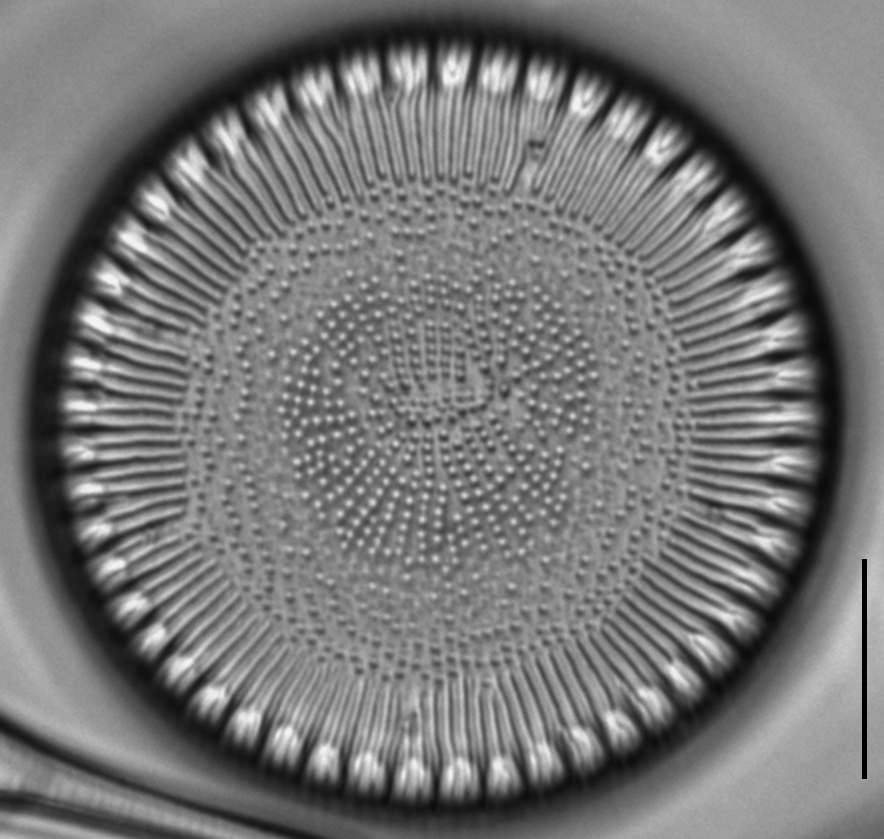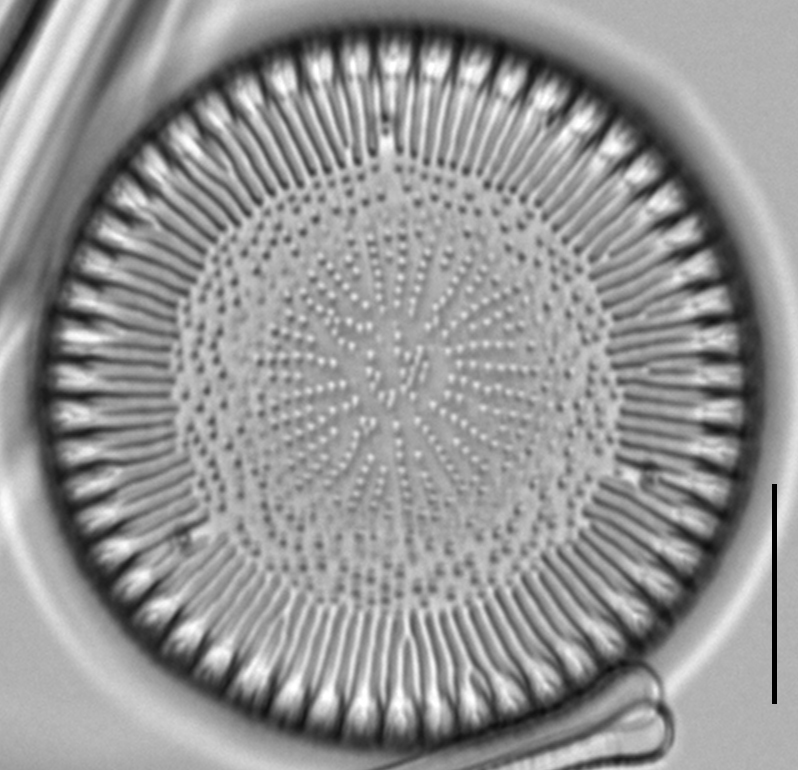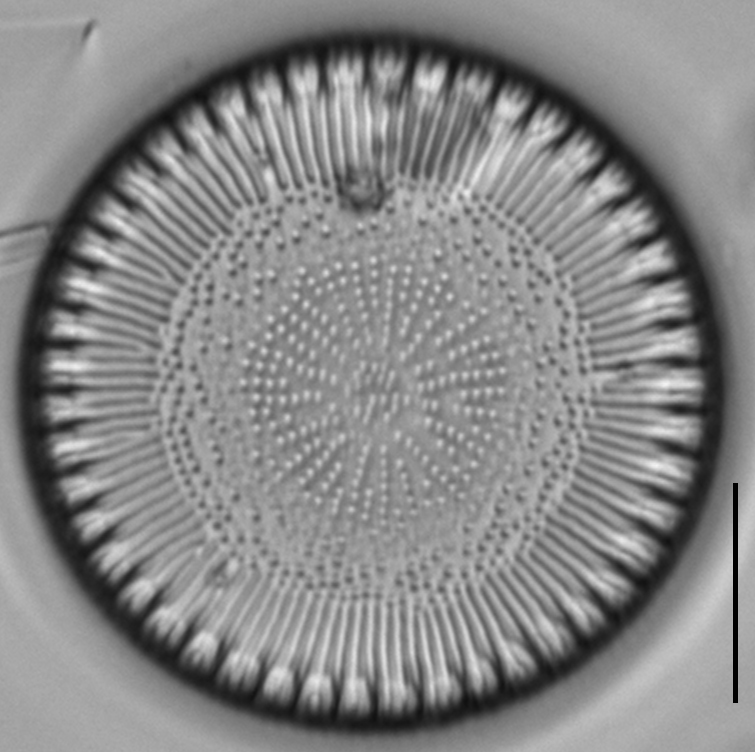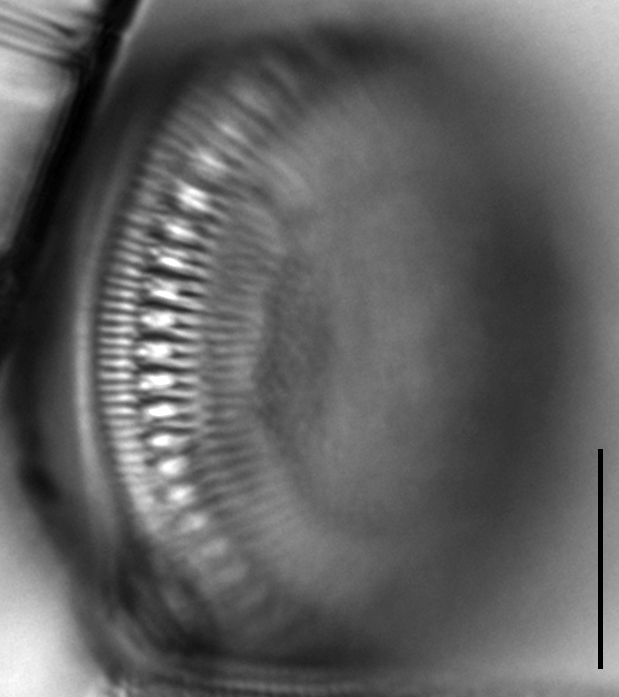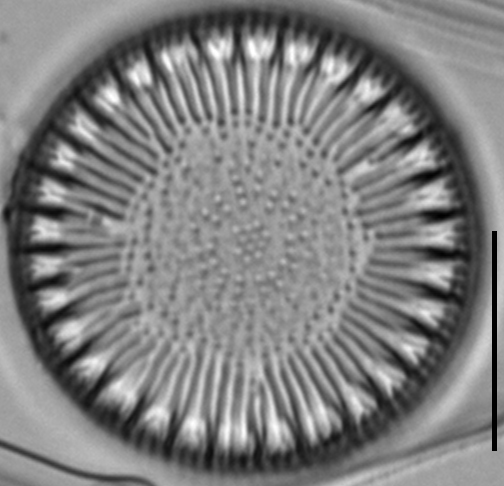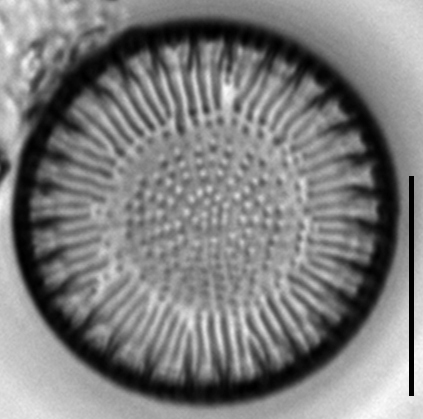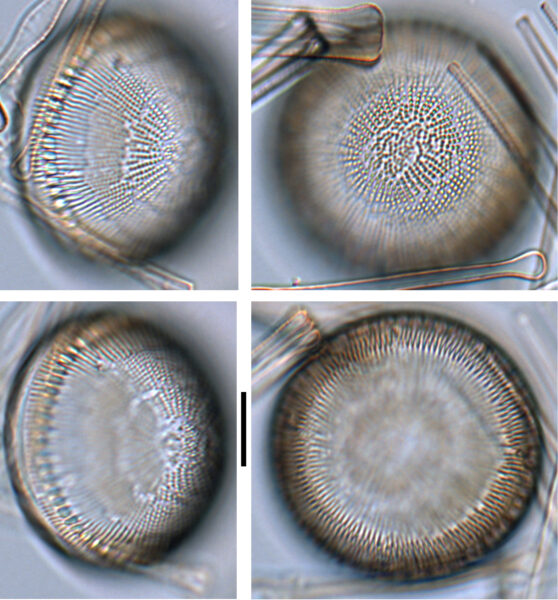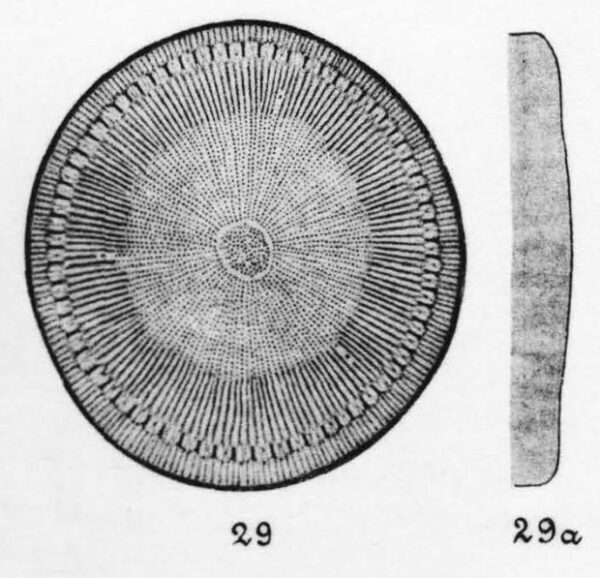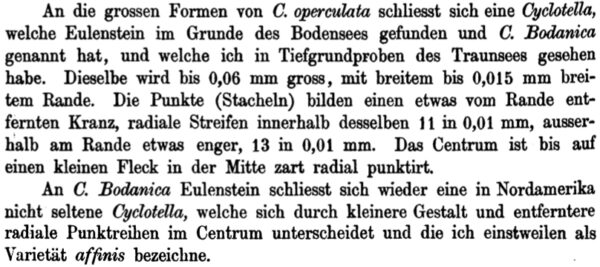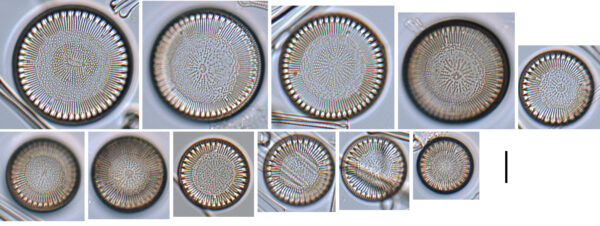
Lindavia bodanica
-
Category
-
Diameter18-38 µm
-
Striae in 10 µm10-14 based on circumferential density
-
SynonymsPuncticulata bodanica (Eulenst. ex Grunow) Håk.
Handmannia bodanica (Eulenst. ex Grunow) Kociolek and Khursevich
Cyclotella comta var. bodanica Grunow
-
ContributorDavid R.L. Burge, Mark Edlund - Jan 2017
-
ReviewerSarah Spaulding - Jan 2017
Identification
Description
Valves are disc-shaped with a concentrically undulate valve face, with the center valve either weakly convex or concave. The ornamentation of the valve face is divided into two distinct parts, the alveolate striae at the margin and a punctate central area. The punctate central covers 2/3 of the valve face (in relation to the diameter) The areolae of the valve center are arranged in a three patterns; 1) at the center of the valve a rosette surrounded by an annulus, 2) rows of areolae radiate from the annulus, or 3) random scattering of areolae. The alveolate striae are often bifurcate at the valve margin with occasional branching of the costae. The alveolate striae often are grouped in pairs, sometimes as 3, and separated by a thickened rib at the margin. The alveolate striae generally terminate evenly to form a distinct boundary to the central ornamentation. Some striae, however, terminate at rimoportulae (2-5 per valve) within the striated portion of the valve face. The number of rimoportuale is size dependent, with larger valves bearing more rimoportulae than smaller valves.
This species is associated with a group of closely related taxa within the L. bodanica-complex, and the identity of members of this group has been the focus of several studies (Håkansson 1988, Houk et al. 2010, Nakov et al. 2015). While there are many reports using the name L. bodanica (or Cyclotella bodanica) as an environmental indicator, few provide verifiable light micrographs or those that do confuse L. bodanica with other species in the complex (Foged 1981, Saros and Anderson 2014).
Autecology
Lindavia bodanica is a planktonic diatom found in low conductivity lakes. For example, L. bodanica is common from larger, low conductivity (<60 µS), oligo-mesotrophic (chl a <2.5 ppb), circumneutral lakes of Canada (Kling and Håkansson 1988). In the Laurentian Great Lakes it is found most abundant in Lake Superior (Reavie and Kireta 2015).
-
Size Range, µm3
-
Motility
-
Attachment
-
Habitat
-
Colony
-
Occurrence
-
Waterbody
-
Distribution
- Learn more about this

Credit: Specimens found by: Allison, Bianca, Christian, Dylan, Emily, Emily S., Ethan, Hailey, Henry, Katrina, Kylie, Lucas, Mady, Nicholas, Nora, Orion, and Thomas, all young citizen scientists at the Science Museum of Minnesota Members Behind the Scenes event on January 16, 2017.
Size series of L. bodanica, scale bar = 10 µm
Citations & Links
Citations
-
Publication Link: 10.1080/0269249X.2002.9705534
-
Publication Link: 10.1080/0269249X.1988.9705017
-
Publication Link: 10.11646/phytotaxa.217.3.2
-
Publication Link: 10.1111/brv.12120
Links
-
Index Nominum Algarum
-
GenBank
-
North American Diatom Ecological DatabaseNADED ID: 208004
Cite This Page
Burge, D., Edlund, M. (2017). Lindavia bodanica. In Diatoms of North America. Retrieved November 21, 2024, from https://diatoms.org/species/lindavia_bodanica
Responses
The 15 response plots show an environmental variable (x axis) against the relative abundance (y axis) of Lindavia bodanica from all the stream reaches where it was present. Note that the relative abundance scale is the same on each plot. Explanation of each environmental variable and units are as follows:
ELEVATION = stream reach elevation (meters)
STRAHLER = distribution plot of the Strahler Stream Order
SLOPE = stream reach gradient (degrees)
W1_HALL = an index that is a measure of streamside (riparian) human activity that ranges from 0 - 10, with a value of 0 indicating of minimal disturbance to a value of 10 indicating severe disturbance.
PHSTVL = pH measured in a sealed syringe sample (pH units)
log_COND = log concentration of specific conductivity (µS/cm)
log_PTL = log concentration of total phosphorus (µg/L)
log_NO3 = log concentration of nitrate (µeq/L)
log_DOC = log concentration of dissolved organic carbon (mg/L)
log_SIO2 = log concentration of silicon (mg/L)
log_NA = log concentration of sodium (µeq/L)
log_HCO3 = log concentration of the bicarbonate ion (µeq/L)
EMBED = percent of the stream substrate that is embedded by sand and fine sediment
log_TURBIDITY = log of turbidity, a measure of cloudiness of water, in nephelometric turbidity units (NTU).
DISTOT = an index of total human disturbance in the watershed that ranges from 1 - 100, with a value of 0 indicating of minimal disturbance to a value of 100 indicating severe disturbance.
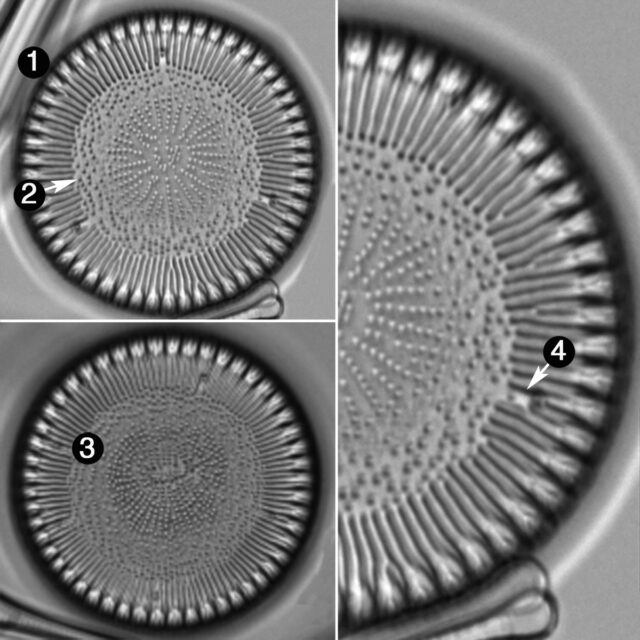
Lindavia bodanica
- Valve face weakly undulate
- Central ornamentation covers 2/3 of valve diameter
- Central ornamentation variable
- Rimoportulae 2-5
Valves are weakly concentrically undulate. The central ornamentation is composed of areolae covering 2/3 of the valve face radius. Central areolae may be arranged in central rosette surrounded by an annulus, radial rows, or a randomly arrangement. Two to five rimoportulae are present at the end of a shortened stria.
 Diatoms of North America
Diatoms of North America